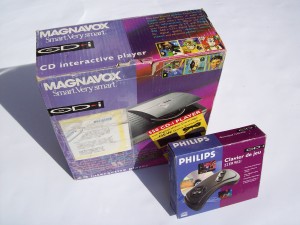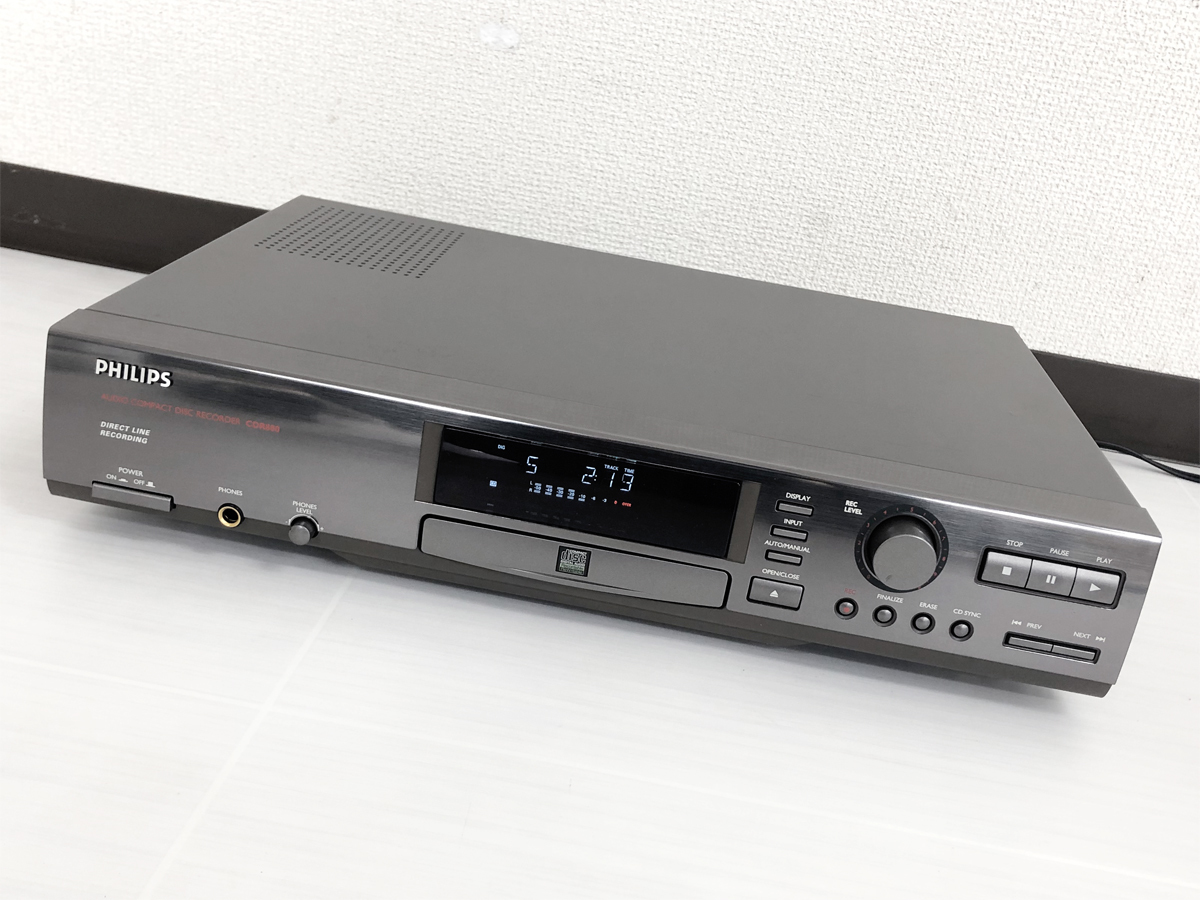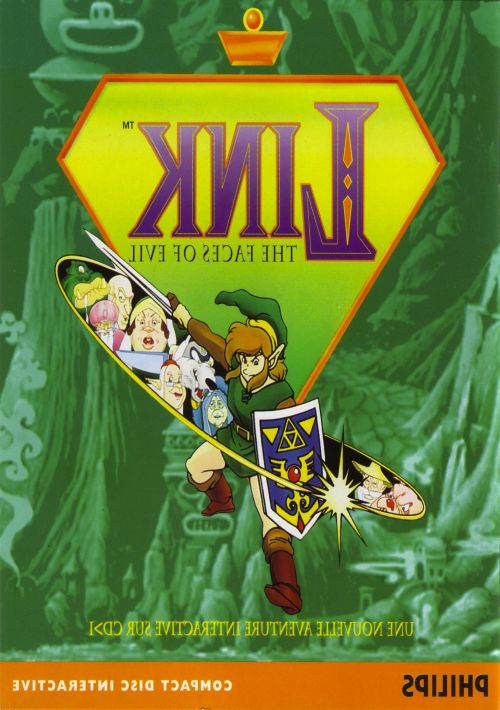
Year Released: 1991
Original Price: £600
Buy It Now For: £50+
Associated magazines: CDi, CD-i, CD-i World, Generation CD-i
Why The CD-i Was Great: A complicated history, great potential, internet capabilities, a long list of fun though mostly unknown games, several exclusive Nintendo-licensed titles (most of which were rather good), and of course the ability to watch VCD films. The CD-i was an unloved underdog which, despite crippling problems and excessively high pricing, was in fact tremendous fun to use. Thanks to low second-hand prices, now is the perfect time to indulge in some CD-i gaming goodness.

Aside from a sledgehammer smashing through it, there is nothing good on the CD-I (Hotel Mario was not good. Sega CD had the same fate, with exception to Sonic CD. Back to the early days of the interactive system development, Philips tried many ways to emulate CD-i titles to make it easier to develop new titles. Its succeeded with the development of a Nubus CD-i board for Macintosh, an ISA & PCI boards for Sun and Windows computers. Philips CD-i emulators The Compact Disc Interactive (CD-i), is an interactive multimedia CD player and format developed and released by Philips on December 3, 1991. It had a Philips SCC68070 CPU at 15.5 MHz with 1MB of RAM. Full-game analysis.no emulators.no fanboyism.rating based on fun.multiplayer rated separately.full details of my rating system below For additional.
Few systems are as unfairly maligned and misrepresented, with regards to the ratio of potential quality and historical significance they had, as the Philips Compact Disc Interactive multimedia system. In some ways it may have been a terribly flawed system, but, and this has to be emphasised, there were also positive attributes, along with a list of historical precedents and high quality games. Its history is complex and shrouded in mistruths, while its lack of success in hindsight seems almost inevitable and the result of gross short-sightedness. It could have spearheaded a revolution, but instead it seems to have become a footnote in Nintendo’s history (there was more to the machine than those infamous licences).
The company Philips is a Dutch enigma. Formed in the city of Eindhoven, in 1891 (technically the second oldest company in the world to dabble in games, after Nintendo which is two years older), by brothers Gerard and Anton Philips. It made light bulbs. Philips moved on to other electrical items and, through repeated entries into the electronic multimedia and entertainment market (which had a cascading effect), set Holland apart from the rest of the world as a unique country with a fascinating locally concentrated videogame movement – one of the few (mostly isolated) countries along with Japan, America and the UK, which were all in a league of their own.
Philips’ first games hardware was the Videopac G7000 in 1978. Some years later the company became one of the first licensees for the MSX home-computer standard. With the hardware being so popular Holland’s MSX following became the biggest outside Japan. Philips’ next (and final) form of “games” hardware, the CD-i, would end up being inextricably connected to both Sony and Nintendo – look closely at the history of gaming and you’ll find that contrary to ignorant forumite screaming, most supposedly competing companies are forever jumping in and out of bed with each other in an orgy of behind-the-scenes business deals. Metaphorically speaking, of course.
The Philips, Sony and Nintendo love-triangle goes back as far as the early-Eighties. During this time Philips and Sony began formulating the “Rainbow Books”, a curious name for a set of Compact Disc standards (several books were defined by or involved other groups, like Kodak). The Red Book standard (1980) is perhaps the best known and relates to music CDs, while the Green Book standard pertains to the CD-i (Compact Disc Interactive Full Functional Specification). This was defined by Sony, Microware Systems Corporation and Philips (estimated to have done 90 per cent of development).


This means that, while Sony’s first videogame hardware was the MSX standard, its first foray into CD based gaming was the CD-i, making the system something of a forerunner to the aborted SNES-CD which later became the PlayStation. Sony manufactured and released several personalised models of self-branded CD-i, including portables such as the IVO-V10. When the company decided to enter the hardware market alone, it was based on the fact that it had already both co-created and dabbled in the medium of CD-based games.
Ironically this also means that, regardless of your thoughts on the CD-i itself, every single games machine which can read CDs is in some way connected to these formative years of Philips and Sony research, and therefore also the related hardware. Were these living creatures, the CD-i would be the DNA ancestor of virtually everything using optical media today. Official Philips and CD-i representative/historian Jorg Kennis boldly proclaims such connections – Philips and Sony’s influence reaches further than anyone realises.
CD-i development (Green Book) began in the mid-Eighties jointly between Philips and Sony, which together decided to use Microware’s OS-9 Operating System in the machine, allowing real-time embedded application usage. Unfortunately several decisions were made which would ultimately lead to the system’s downfall. It was also terribly late in arriving. Speaking to the ever affable Dale DeSharone (see last issue), he explained the launch date was supposed to be in 1988, with the companies involved only planning to allow a single year for the system to be understood and launch software developed.
Cdi Emulator Free
DeSharone left sunny California in 1987 to move to Boston Massachusetts and work fulltime at Spinnaker Software; his role was to create a CD-i development team. He explains, “Spinnaker had a deal with Philips to produce seven launch titles. I was brought on to help understand the capabilities of the platform and act as design lead.” As divulged last issue, his immediate supervisor was a member of the original Red Book specification team, Steve Yellick. Although a technological guru he didn’t know about making games, and after a year met with an unpleasant demise. Suddenly DeSharone was manager of the group and dealing with every facet of development. “I designed, programmed, wrote editing tools and engines, and hired and managed artists, programmers and audio engineers. We built Laser Lords, Alice In Wonderland, Sargon Chess, Paint School I and II, plus Story Machine I and II.”
Unfortunately they weren’t able to complete things in the allotted year. “I had originally planned to be at Spinnaker only one year as Philips was planning to release the machine in 1988. That one year turned into four, due to constant delays with the hardware emulation systems and the operating system. I think the launch was closer to 1991.”
Philips Cdi Emulator Download
This would prove to be one of Philips’ biggest mistakes, since the late arrival meant NEC were first on the market with a CD console (PC-Engine CD-ROM 2), and by the time the CD-i was available other CD systems were either already available or soon to be released (Commodore CDTV, Sega CD, etc). DeSharone spoke further on such problems. “Unfortunately for Philips, as each year passed, CD technology made more inroads into being a standard part of the PC and Mac computers. And, while the PC was getting more memory and faster processors, Philips chose to stay with the original 1987 specification using the 68000 chip. This was the original 68000 found in the first Macintosh computers. It was dreadfully slow and severely limited what was possible with the system.” So not only was the CD-i late, therefore missing a crucial market entry which may have saved it, the system was underpowered and overpriced. But Philips made further mistakes, the result being almost a comedy of errors.
Along with being comparatively underpowered, the CD-i had several inherent problems not anticipated by Philips. The late Silas Warner of Novalogic (Super Mario’s Wacky Worlds), in an interview with www.blackmoonproject.co.uk, explained that the system should have been easy to work with. “I had just been laid off from Amiga and Atari work at Microprose. Since my previous work had been with the 68000, it wasn’t hard to adjust to the crippled 68000 used in the CD-i. Like the Amiga, the CD-i had a ‘display list’ video structure in which every scan line was specified. The software architecture of the CD-i, in contrast, was wonderfully simple and elegant. The operating system was called OS9, and had the distinction that every program was relocatable.” But Warner also had some surprising truths to reveal. “There were bugs and glitches. The scan line interrupt, normally the highest priority interrupt in the system, was overridden by the joystick. This meant the display would jump up and down whenever the joystick was moved. This required quite a bit of ingenuity to overcome, and a method was worked out at the CD-i development conference in the spring of 1992. This kind of ‘patch’ was an example of the kind of flexible programming that OS9 made possible.” Luckily OS9 enabled a solution, but it’s shocking that months after the launch developers had to find workarounds for crippled hardware. Things were going to get worse for the CD-i before they got better…
Four Great CD-i Games
Secret Mission
Ram Raid
Burn Cycle
Pac-Panic
Philips Cdi Emulator Apk
Read the full feature in Retro Gamer issue 32, on sale digitally from GreatDigitalMags.com
Retro Gamer magazine and bookazines are available in print from ImagineShop
Philips Cdi Emulator Online

Tags: CD-i, CDI, hardware, philips